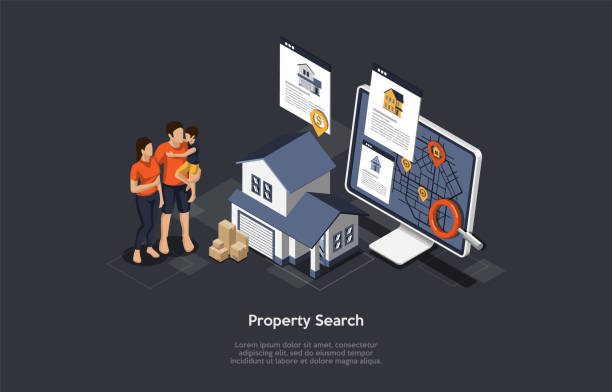Embarking on the journey to homeownership is an exciting and rewarding experience, but it can also be overwhelming without a roadmap to guide you through the process. From the initial steps of pre-qualification to the final stages of closing the deal, each phase of the journey requires careful planning, research, and preparation. In this comprehensive guide, we’ll walk you through the key steps involved in purchasing a home and offer valuable insights to help you navigate the path to homeownership with confidence and clarity.
- Assess Your Financial Readiness: Before diving into the homebuying process, it’s essential to assess your financial readiness and determine how much house you can afford. Start by reviewing your income, expenses, and existing debts to calculate your debt-to-income ratio (DTI) and determine a realistic budget for your home purchase. Additionally, check your credit score and report to identify any potential red flags or areas for improvement. A higher credit score typically translates to better loan terms and lower interest rates, so take steps to address any outstanding issues and improve your creditworthiness if needed.
- Get Pre-Qualified for a Mortgage: Once you have a clear understanding of your financial situation, it’s time to get pre-qualified for a mortgage. Pre-qualification involves providing basic financial information to a lender, such as your income, assets, and debts, to determine how much you may be eligible to borrow. While pre-qualification doesn’t guarantee loan approval, it provides valuable insights into your homebuying budget and demonstrates to sellers that you’re a serious and qualified buyer. Shop around and compare offers from multiple lenders to find the best mortgage rates and terms that suit your needs.
- Find the Right Real Estate Agent: Partnering with a knowledgeable and experienced real estate agent can make all the difference in your homebuying journey. Look for an agent who understands your preferences, priorities, and budgetary constraints, and who has a strong track record of success in your desired market. Your agent will guide you through the process of searching for homes, scheduling showings, negotiating offers, and navigating the complexities of the transaction, ensuring a smooth and successful homebuying experience from start to finish.
- Start House-Hunting: With your pre-qualification letter in hand and a trusted real estate agent by your side, it’s time to start house-hunting! Begin by creating a list of must-have features and amenities for your new home, such as location, size, layout, and amenities. Attend open houses, tour properties, and explore different neighborhoods to get a feel for what’s available within your budget and preferences. Keep an open mind and be prepared to compromise on certain aspects of your wish list to find the perfect home that meets your needs and budget.
- Make an Offer: Once you’ve found the home of your dreams, it’s time to make an offer. Work with your real estate agent to determine an appropriate offer price based on market conditions, comparable sales, and the condition of the property. Your agent will help you draft a purchase offer that outlines the terms and conditions of the sale, including the purchase price, earnest money deposit, financing contingencies, and proposed closing date. Submit your offer to the seller and be prepared to negotiate terms if necessary, keeping in mind your budget and priorities.
- Secure Financing: Upon acceptance of your offer, it’s crucial to finalize your financing and secure a mortgage loan. Provide any additional documentation requested by your lender, such as bank statements, pay stubs, tax returns, and employment verification. Complete the loan application process promptly and thoroughly to expedite loan approval and avoid delays in closing. Work closely with your lender to address any underwriting issues or conditions that arise and ensure a seamless transition to the closing process.
- Conduct a Home Inspection: Before closing on the property, it’s essential to conduct a thorough home inspection to identify any potential issues or defects that may affect the property’s value or safety. Hire a qualified home inspector to assess the property’s condition, including its structural integrity, mechanical systems, and safety features. Review the inspection report carefully with your real estate agent and discuss any concerns or findings with the seller. Depending on the results of the inspection, you may negotiate repairs or credits with the seller or request additional inspections for further evaluation.
- Close the Deal: The final step in the homebuying process is closing the deal, where you’ll sign all necessary paperwork and officially take ownership of the property. Prior to closing, review the closing disclosure and loan documents provided by your lender to ensure accuracy and completeness. Arrange for a final walk-through of the property to verify that all agreed-upon repairs have been completed and the property is in satisfactory condition. On closing day, bring a valid form of identification, your down payment and closing costs, and any other required documentation to the closing appointment. Sign the closing documents, pay any remaining fees or expenses, and receive the keys to your new home! Congratulations, you’re officially a homeowner!
In conclusion, the journey to homeownership is an exciting and rewarding experience that requires careful planning, preparation, and perseverance. By following these key steps from pre-qualification to closing the deal, you can navigate the homebuying process with confidence and clarity, making informed decisions every step of the way. With the right guidance, resources, and support, you’ll soon be settling into your new home and enjoying the many benefits of homeownership for years to come. Happy house hunting!

